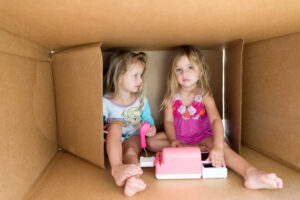14 Developmental Benefits of Pretend Play

READ FIRST– The following resource provides an overview of children’s pretend play and the important skills children develop by engaging in this type of play.
- Read “Pretend Play” (pp. 15-23) in The Power of Play: A Research Summary on Play and Learning by Dr. Rachel E. White for Minnesota Children’s Museum (~15 minute read)
CHOOSE TWO- Select at least two of the articles below to learn more about pretend play during early childhood.
- How Play Energizes Your Kid’s Brain by Cassandra Willyard (~9 minute read)
In this New York Times article, Willyard shares insights from several experts about the importance of pretend play for young children.
- Play a Child’s Mechanism for Coping by Lois Ingellis (~11 minute read)
In this piece from Community Playthings, Ingellis discusses how children use pretend play to understand the world and deal with tragic events occurring around them.
- More than Dress Ups: Fostering Social and Emotional Development in the Dramatic Play Corner by Jean Schreiber (~13 minute read)
In this article from Community Playthings, Schreiber focuses on how children develop key social and emotional skills while engaging in pretend play.
- The Building Blocks of Dramatic Play by Tom Hobson (~ 5 minute read)
In this piece from Edutopia, Hobson describes the value of disagreements during pretend play and how this supports children’s development.
- How Children Process Grief and Loss Through Play by Emily Kaplan (~8 minute read)
In this Edutopia article, Kaplan reflects on how the current events of 2020 might influence children’s pretend play and how adults can support children as they make sense of the world around them during this type of play.
CHOOSE ONE– Select at least one of the videos below to watch to learn more about key aspects of the developmental benefits of pretend play.
- Make-Believe Play by Head Start ECLKC (~ 5 minutes)
This video addresses the developmental stages of pretend play for children birth through age 5 as well as how to support young children’s pretend play.
- Power of Play- Zero to Three Magic Everyday Moments by Zero to Three (~ 5 minutes)
This video focuses on children birth through age three. First, they provide an overview of children’s play during this age range before providing more specific details of how children’s pretend play develops during the first three years of life.

